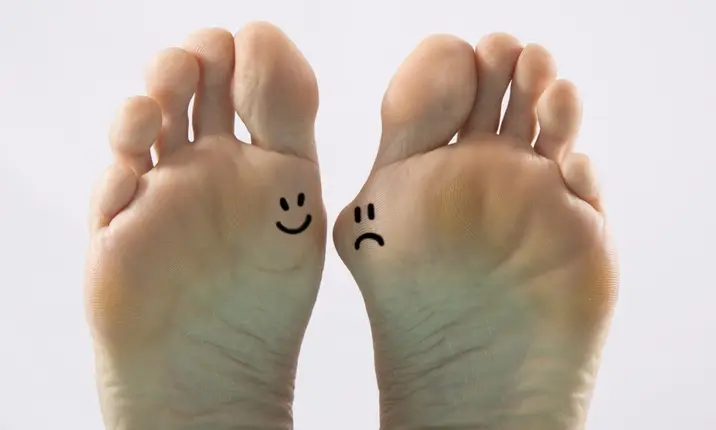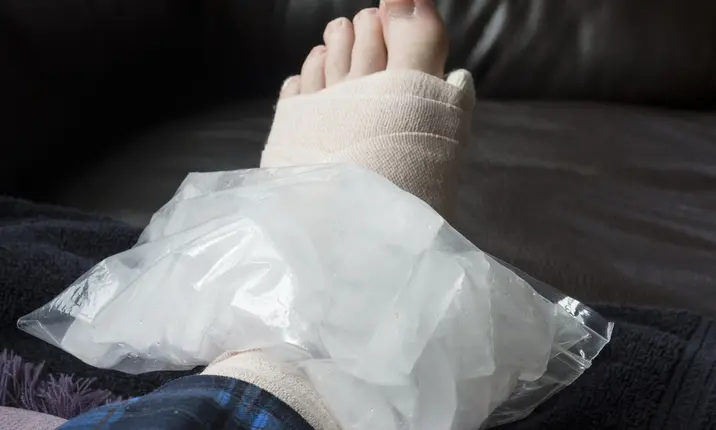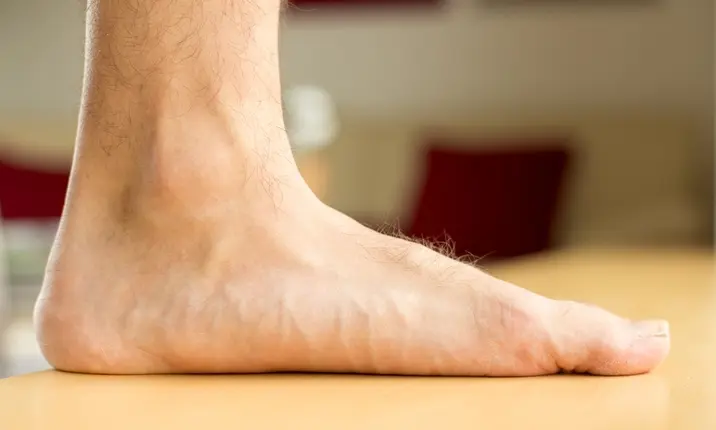Here, Dr Kannan Kaliyaperumal, orthopaedic surgeon at Mouth Elizabeth Hospital, shares some of the most common foot and ankle conditions, as well as their symptoms and treatment options, so you know what to do next.
Bunions
A bunion is essentially a deformity of the big toe. Patients with bunions have a toe which points outwards, as well as a bump on the inner side of the foot. They are more frequently seen in women.
As a bunion gets bigger and callouses form, it can become quite painful.
So, what causes bunions? Some studies show that patients whose family members have bunions are more likely to develop bunions themselves. Regularly wearing constrictive shoes, like high heels, may also make bunions worse. In most cases, there are a combination of factors contributing to the condition.
If you have bunions and don't get them treated, you could end up with painful swelling, cracked skin, overlapping lesser toes, and eventually painful arthritis (wear and tear) with stiffness in the joint. These symptoms may in turn affect your walking pattern, as you naturally shift your weight onto your other foot to avoid the pain.
Most bunions can be managed without surgery by using silicone toe spacers, night splints, modified footwear or custom insoles to take the pressure off the painful joint.
If the bunion becomes severely painful, causes walking difficulty or restricts your footwear choices, surgery may be necessary. In a day procedure, your surgeon will realign the big toe joint to relieve symptoms, correct any deformity and restore function. Most patients can walk the day after surgery, with full recovery usually taking about 8 – 12 weeks.
Ankle sprains
While an ankle sprain is a common sports injury, it can also occur anytime during everyday activities, including after an awkward fall. The ankle most commonly twists inwards, which can strain ligaments in the ankle. You might see your ankle swell up, feel pain when walking and experience a limited range of motion. You may even hear or feel a 'pop' sound when the strain occurs.
It's sometimes tempting to ignore an ankle sprain as 'no big deal'. But, if left untreated, the injury may not heal properly, and you could be left with chronic pain. Instead, you should follow the RICE method (Rest, Ice, Compression, Elevation):
- Rest: Avoid activities that cause pain, swelling or discomfort.
- Ice: Use an ice pack immediately for 15 – 20 minutes and repeat every 2 to 3 hours while you're awake. If you have vascular disease, diabetes or decreased sensation, talk with your doctor before applying ice.
- Compression: To help stop swelling, compress the ankle with an elastic bandage until the swelling stops. Be careful not to wrap too tightly, as this can constrict your circulation. Begin wrapping at the end of the foot farthest from your heart.
- Elevation: To reduce swelling, elevate your ankle above the level of your heart, especially at night. Gravity helps reduce the swelling by draining excess fluid.
The swelling and pain from a mild ankle sprain usually settles within 3 – 5 days. However, if you experience excessive pain, bruising and persistent swelling that does not settle within 2 – 3 days, make sure you consult your doctor to rule out a bone injury, cartilage injury or ligament tear.
Your doctor may treat a more serious ankle sprain with structured physiotherapy sessions, a brace or a prolonged period of rest.
If pain persists, there could be deeper bone bruising or scar tissue getting in the way of your recovery. Alternatively, torn or injured ligaments may make your ankle give way more easily or feel unstable. If these issues don't respond to other treatments, there is a small chance you may need surgery.
Depending on your ongoing issue, your doctor may perform an arthroscopic debridement (to remove scar tissue), ligament repair or cartilage resurfacing (to replace damaged cartilage). Most of these day surgeries are performed using keyhole techniques. Depending on the type of surgery you have, you can usually resume your regular exercise routine within 2 – 3 months.
Flat feet
Age group is an important consideration when it comes to flat feet! Children are far more likely to have painless, flexible flat feet (known as mobile flat feet), as their ligaments are looser and stretchable. However, they may still experience a dull, aching pain over the foot or heel cord during sports or running. If your child has flat feet, you can try simple Achilles stretching exercises, customised orthotics and modified footwear to help ease any pain – consult your doctor for more advice.
In rare cases, an underlying condition such as a tarsal coalition (bones fused together) or an extra unfused bone could be the root of the problem. Occasionally, these conditions need surgical intervention.
If you have flat feet, there is a chance it could be caused by tendon dysfunction. This is when the tendon gets damaged from overuse or degeneration. Symptoms include pain and swelling on the inner foot, as well as a gradual loss of arch, weakness and the inability to stand on your tiptoes.
In the early stages, physiotherapy and customised orthotics may help. If left untreated, the condition could lead to degenerative arthritis and difficulty with walking, but surgical treatment to realign the foot and repair the tendon can help with this. Recovery from corrective surgery usually takes about 6 – 8 weeks.















